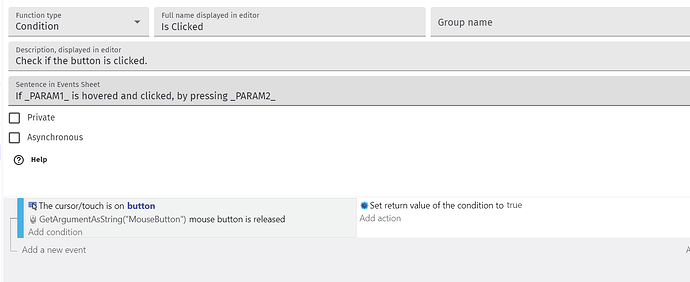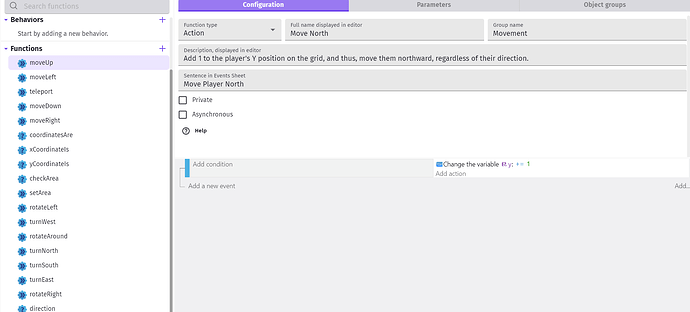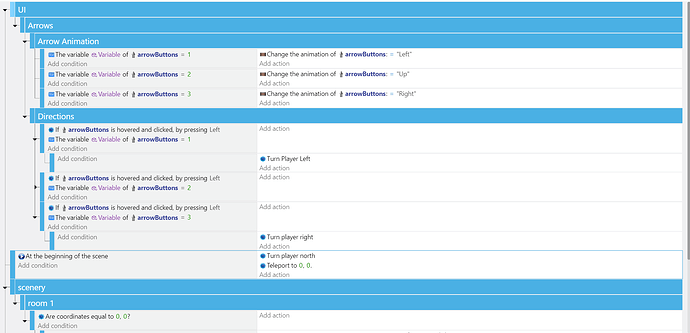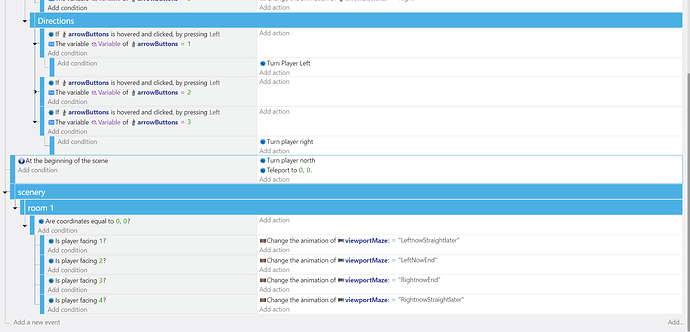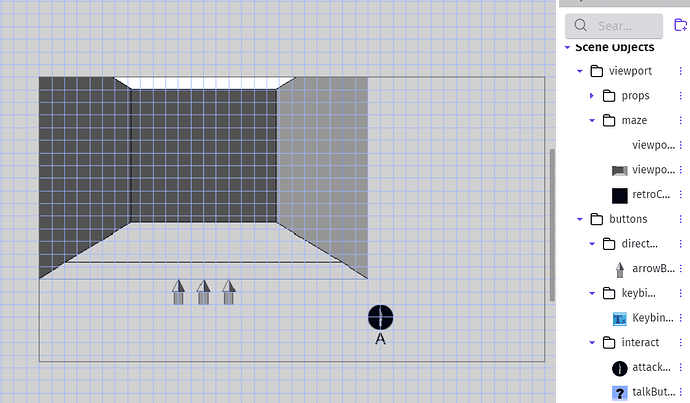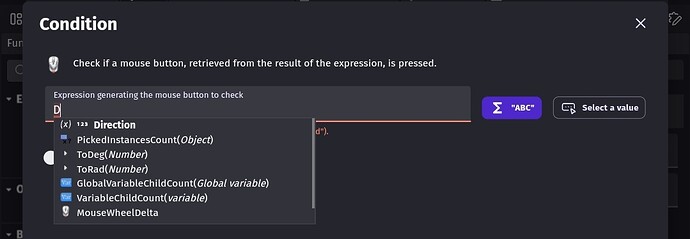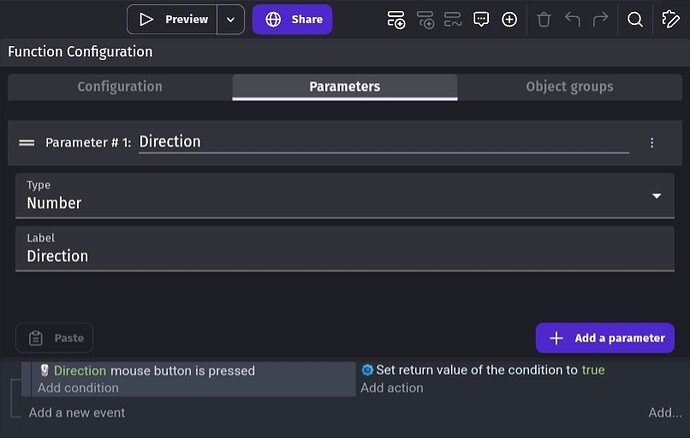I have two extensions in my game, hand-made.
One just checks whether an object is hovered while the user’s choice of mouse button is released.
The other is a complex variable-handler that is supposed to handle all the variables needed for an old-school 1st person 2d dungeon crawler: direction the player is looking (1,2,3,4) xy coordinates on a grid (x,y) and the current area (…then set the area [or area type] as x; if area type = x, then …). The extension adds conditions and actions to manipulate those variables. You can either rotate relative to the current rotation or just turn left or right. Then, you can move forward, backward, left, or right, by changing the coordinates.
Or that’s how it’s supposed to work. But I set up a room, by saying that if the coordinates are 0,0, then if the rotation is 1, one animation of the viewport is shown, and if 2, another, and if 3, another, and if 4, another, all meant to look like the same spot from different angles. When the buttons for left and right were clicked, the rotation was supposed to add or subtract 1. I’m not sure if I made sure to loop the rotations so that if one went right while looking left, the rotation change back to 1, but if that were the case, at least one button would still work. Neither button changes the animation. The viewport does nothing but sit there. I do believe that the criteria I specified at the beginning of the scene, look north at these coordinates, worked, because the original animation of the viewport is straightnowstraightlater, without any side-exits to the hallway, and the animation in the preview was leftnowstraightlater, a backward l-shaped passage.
(The side arrow buttons, if you can see it in the events, actually have different animations, based on variables, that make them angled to the sides.)
I am willing to show any other info on the makeup of my extension and other events as is needed.
